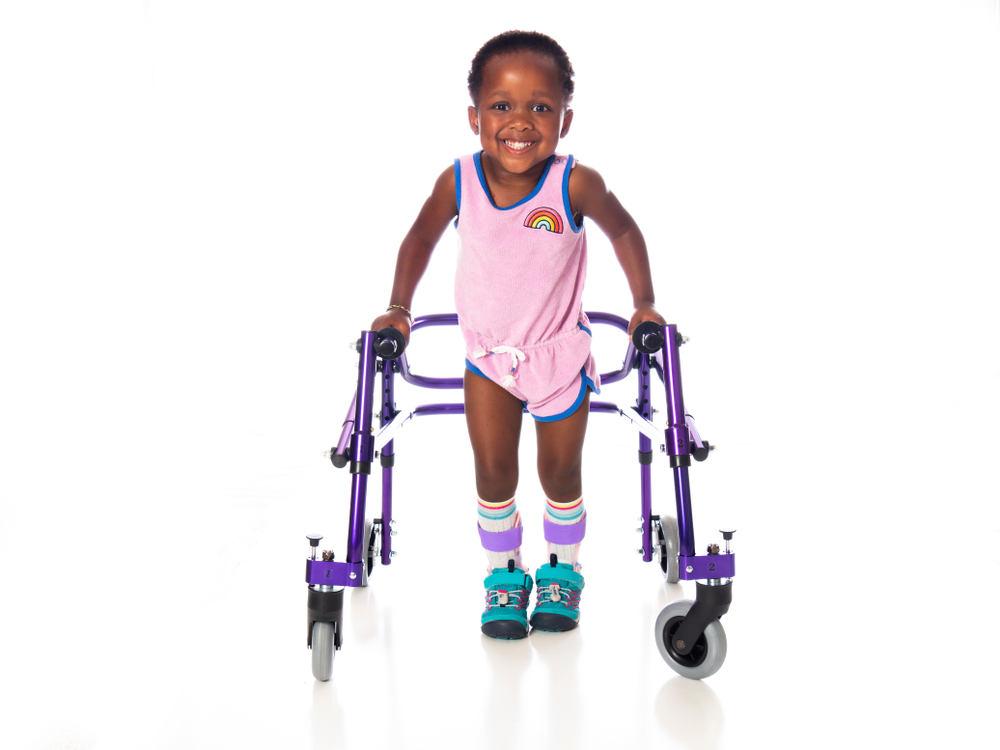Defining Birth Injuries
Birth injuries refer to any harm or damage that an infant sustains during the labor and delivery process. These injuries can range from minor, such as small bruises or lacerations, to severe, such as fractures or nerve damage. The causes of birth injuries are varied and can include physical pressure during birth, lack of oxygen, or medical mismanagement.
- Physical pressure: This can occur when the baby is passing through the birth canal and may result in bruising or skull fractures.
- Lack of oxygen: Also known as birth asphyxia, this can lead to more serious conditions like cerebral palsy or other forms of brain damage.
- Medical mismanagement: This includes improper use of delivery tools or a delay in performing necessary procedures, which can exacerbate the risk of injury.
It is crucial to understand the nature and potential consequences of birth injuries to provide appropriate care and support. Organizations like the Birth Injury Lawyers Group are instrumental in offering legal assistance to families affected by such events. They specialize in handling various cases related to birth injuries and provide free consultations to explore compensation options.
Common Types and Causes
Birth injuries can vary widely in type and severity, but some are more common than others. Among these, perinatal asphyxia, which is a lack of oxygen to the brain during birth, stands out as a significant cause of potential cognitive impairment. Brachial plexus injuries, resulting from damage to the group of nerves that supply the arms and hands, can also occur during a difficult delivery.
Mechanical trauma, which may happen due to the use of forceps or vacuum extraction, is another common type of birth injury. These tools, while useful in assisting a challenging birth, can sometimes lead to skull fractures or intracranial hemorrhage if not used with utmost care. Additionally, cephalohematoma, the bleeding underneath one of the cranial bones, can arise from birth trauma.
The causes of these injuries are multifaceted, often involving complications during labor and delivery. Factors such as prolonged labor, breech presentation, or a baby’s large size relative to the birth canal can increase the risk of birth injuries. Maternal health issues, such as diabetes or high blood pressure, can also contribute to the likelihood of complications. It is crucial for healthcare providers to anticipate and manage these risks to minimize the occurrence of birth injuries.
Immediate and Long-Term Effects
Birth injuries can have a range of immediate effects on a newborn, including physical harm such as bruising and fractures, as well as more severe consequences like oxygen deprivation leading to neurological damage. The initial impact often requires urgent medical attention and can set the stage for various health challenges that may unfold over time.
The long-term effects of birth injuries are diverse and can extend far beyond the neonatal period. These may include:
- Developmental delays in motor skills or speech
- Cognitive impairments affecting learning and memory
- Emotional and behavioral issues stemming from neurological damage
- Chronic physical disabilities requiring ongoing therapy and support
The severity and persistence of these effects largely depend on the nature of the injury, the timeliness and effectiveness of the initial treatment, and the child’s overall health and environment. Understanding these outcomes is crucial for developing targeted interventions that can help mitigate the adverse consequences of birth injuries on cognitive development.
Cognitive Development in Early Childhood
Stages of Cognitive Growth
Cognitive development in early childhood is a dynamic and complex process, unfolding through a series of predictable stages. Each stage is characterized by unique milestones and abilities that children typically achieve as they grow.
- The first stage, known as the sensorimotor stage, spans from birth to approximately two years of age. During this period, infants learn about the world through their senses and actions, developing object permanence and beginning to understand cause and effect.
- Following the sensorimotor stage, children enter the preoperational stage, which lasts until about seven years old. This stage is marked by the development of language and symbolic thinking, yet children in this phase still struggle with understanding the perspectives of others and are bound by egocentric thought.
- The concrete operational stage, occurring between seven to eleven years of age, is when children start to think logically about concrete events. They gain a better grasp of the concept of conservation and can classify objects according to several features.
- Finally, the formal operational stage begins around age twelve and extends into adulthood. Adolescents in this stage develop the ability to think abstractly, reason logically, and plan systematically, setting the foundation for complex problem-solving and hypothesis testing.
Understanding these stages helps educators and parents support children’s cognitive growth, tailoring learning experiences to their developmental level.
Factors Influencing Cognitive Development
Cognitive development in early childhood is a complex process influenced by a myriad of factors. These factors can be broadly categorized into genetic, environmental, and social elements, each playing a pivotal role in shaping a child’s cognitive abilities.
- Genetic Factors: Inherited traits from parents can significantly impact cognitive skills. Genetic disorders or variations can predispose children to developmental challenges.
- Environmental Factors: Exposure to toxins, nutrition, and physical health during early years are critical. Birth injuries, for instance, can have lasting effects on cognitive functions. A website provides information on birth injuries and cerebral palsy, detailing the potential long-term cognitive implications.
- Social Factors: The child’s social interactions, including family dynamics and educational opportunities, contribute to cognitive development. Supportive environments foster better outcomes.
It is essential to recognize that these factors do not operate in isolation. Instead, they interact in complex ways that can either hinder or enhance cognitive growth. For example, the Mayo Clinic page on cerebral palsy highlights the importance of understanding the various risk factors and complications that can arise, emphasizing that while there is no cure, treatments are available to improve function. This underscores the need for comprehensive care and intervention strategies to support affected children.
Assessing Cognitive Function in Children
The assessment of cognitive function in children is a critical step in understanding their developmental progress. This process involves a variety of standardized tests and observational strategies designed to measure skills such as memory, problem-solving, language development, and attention span.
Key methods of assessment include:
- Developmental screening during routine health check-ups.
- Comprehensive neuropsychological evaluations for more in-depth analysis.
- Observational assessments in naturalistic settings such as home or school.
These assessments help identify children who may benefit from early intervention services. They also provide a baseline for tracking cognitive development over time. It is important for these evaluations to be culturally sensitive and age-appropriate to ensure accuracy and relevance. Collaboration between parents, educators, and healthcare providers is essential in interpreting the results and implementing any necessary support strategies.
Investigating the Link Between Birth Injuries and Cognitive Impairment
Epidemiological Evidence
The exploration of epidemiological evidence is crucial in understanding the connection between birth injuries and cognitive impairment. Large-scale studies provide a comprehensive overview of the incidence and outcomes of birth injuries, offering insights into the potential long-term effects on cognitive development.
One significant aspect of epidemiological research is the analysis of healthcare data, which includes the review of obstetric malpractice claims. These claims often result in high settlements, indicating the severity of the impact that birth injuries can have on individuals and families. Notably, while some cases see extraordinarily high compensation, skewing the average, the median compensation figure of $354,523.50 offers a more grounded perspective of the financial implications.
Epidemiological studies also examine the prevalence of specific types of birth injuries and their correlation with cognitive deficits observed later in life. By analyzing data from various populations, researchers can identify patterns and risk factors, which are essential for developing preventive measures and targeted interventions.
Neurodevelopmental Outcomes of Birth Trauma
Birth trauma can have a significant impact on a child’s neurodevelopmental trajectory. The severity and nature of the injury often dictate the range of potential cognitive and motor deficits that may emerge as the child grows. For instance, oxygen deprivation during birth, known as hypoxic-ischemic encephalopathy (HIE), can lead to cerebral palsy, characterized by impaired movement and coordination.
The spectrum of neurodevelopmental outcomes following birth trauma is broad, encompassing various domains such as:
- Cognitive function, including memory, attention, and problem-solving abilities
- Language and communication skills
- Social and emotional development
- Fine and gross motor skills
Early diagnosis and intervention are crucial in mitigating the long-term effects of birth injuries. Children who receive timely and appropriate therapies, such as physical, occupational, and speech therapy, often demonstrate significant improvements. However, some may continue to experience challenges throughout their lives, necessitating ongoing support and accommodations.
Case Studies and Longitudinal Research
Case studies and longitudinal research provide a unique insight into the long-term effects of birth injuries on cognitive development. By following individuals over extended periods, researchers can observe the progression of cognitive abilities and identify any persistent challenges or delays.
- Case Studies: These offer detailed observations of single individuals or small groups. They can reveal the nuanced ways in which birth injuries affect cognitive functions, such as language acquisition, memory, and problem-solving skills.
- Longitudinal Research: This approach involves studying larger populations over time. It helps in understanding the broader trends and the potential for recovery or improvement in cognitive functions. Longitudinal studies also allow for the examination of various factors that might influence cognitive outcomes, such as the severity of the injury, access to early intervention, and the socio-economic status of the family.
The findings from these types of research are critical for developing targeted interventions and informing best practices in both clinical and educational settings. They underscore the importance of early and accurate diagnosis, as well as the need for ongoing support for children affected by birth injuries.
Intervention Strategies and Support Systems
Early Intervention Programs
Early intervention programs are crucial in mitigating the potential long-term cognitive effects of birth injuries. These programs typically involve a team of specialists who work together to create a tailored plan for each child, focusing on areas such as speech therapy, physical therapy, and cognitive skills development.
Key components of effective early intervention programs include:
- Individualized Family Service Plans (IFSPs) that outline specific goals and strategies for the child’s development.
- Regular monitoring and assessment to track progress and adjust interventions as needed.
- Parent and caregiver education to ensure that developmental support continues at home.
The success of these programs often hinges on the timing of the intervention. Research has shown that the earlier the support is provided, the better the outcomes for the child’s cognitive and physical development. Therefore, prompt identification and referral to early intervention services are essential steps following the diagnosis of a birth injury.
Educational Adjustments for Affected Children
Children who have experienced birth injuries may face unique challenges in educational settings. To accommodate their needs and promote optimal learning, schools and educators often implement specialized adjustments. These adjustments are tailored to the individual’s specific impairments and can range from minor modifications to comprehensive educational plans.
- Individualized Education Programs (IEPs): IEPs are customized plans developed for students with disabilities, ensuring they receive the appropriate support and resources.
- Assistive Technologies: The use of tools like speech-to-text software or audio books can help children with cognitive or physical impairments engage with educational material.
- Specialized Instruction: Trained educators can provide targeted instruction that addresses the child’s pace and style of learning.
- Classroom Accommodations: Adjustments such as preferential seating, extended test time, or a quiet environment can make a significant difference in a child’s ability to focus and learn.
The goal of these educational adjustments is not only to facilitate academic achievement but also to foster a sense of inclusion and independence. By recognizing and addressing the individual needs of children with birth injuries, educators can create a supportive and effective learning environment.
Family Support and Counseling
The role of family support and counseling cannot be overstated in the context of managing the repercussions of birth injuries. Families are often the primary caregivers and play a crucial role in the child’s development and adaptation to cognitive challenges. Counseling services provide essential guidance, helping families to understand the nature of the injury and its potential impact on cognitive development.
Key components of effective family support and counseling include:
- Emotional support to help family members cope with stress and uncertainty.
- Educational resources to inform families about birth injuries and cognitive development.
- Strategies for home-based interventions that complement therapeutic efforts.
- Networking opportunities with other families facing similar challenges.
Through these support systems, families can become empowered advocates for their children, ensuring access to necessary resources and accommodations. Moreover, counseling can help in identifying signs of cognitive delays early on, allowing for timely interventions that can significantly improve outcomes. As families navigate the complexities of raising a child affected by birth injuries, the continuous support from professionals and community resources becomes an invaluable asset in fostering resilience and promoting optimal development.
Future Directions in Research and Healthcare
Advancements in Neonatal Care
The field of neonatal care has seen significant advancements in recent years, driven by technological innovation and a deeper understanding of newborn physiology. These improvements have been pivotal in enhancing the survival rates and health outcomes for infants, particularly those who suffer from birth injuries.
Key developments include:
- Enhanced Monitoring Systems: The introduction of sophisticated monitoring equipment allows for real-time tracking of an infant’s vital signs, ensuring immediate medical intervention when necessary.
- Improved Respiratory Support: Innovations in ventilator technology and less invasive respiratory support techniques have greatly reduced the incidence of lung damage in premature infants.
- Nutritional Optimization: Advances in neonatal nutrition, including the fortification of breast milk and specialized formulas, support the growth and development of at-risk neonates.
- Neuroprotective Strategies: Emerging treatments aimed at protecting the brain, such as therapeutic hypothermia, have shown promise in mitigating the effects of neurological birth injuries.
These advancements not only contribute to the immediate well-being of newborns but also have the potential to positively influence their long-term cognitive development. Ongoing research and innovation in neonatal care remain critical to further reducing the impact of birth injuries on later life outcomes.
Predictive Analytics in Birth Injury Outcomes
The integration of predictive analytics into the realm of birth injuries represents a significant leap forward in neonatal care. By harnessing the power of data, healthcare professionals can now anticipate potential complications and cognitive development issues that may arise from birth traumas.
- Data Collection: The first step involves the aggregation of vast amounts of historical and real-time data from various sources, including medical records and birth outcome reports.
- Algorithm Development: Specialists in the field then develop sophisticated algorithms capable of identifying patterns and risk factors associated with adverse cognitive outcomes.
- Risk Assessment: These algorithms are applied to individual cases to estimate the likelihood of future developmental challenges, allowing for preemptive measures.
The potential of predictive analytics extends beyond individual patient care. It also offers a broader perspective on public health, enabling the identification of trends and the allocation of resources to areas where they are most needed. As the technology advances, the hope is that it will lead to more personalized and effective interventions, reducing the long-term impact of birth injuries on cognitive development.
Policy Implications and Advocacy
The intersection of birth injuries and cognitive development has significant policy implications, necessitating a multifaceted approach to advocacy. Policymakers are urged to consider the following points:
- Establishing Clear Guidelines: There is a need for clear, evidence-based guidelines that can help prevent birth injuries. These should be informed by the latest research and best practices in neonatal care.
- Funding for Research: Increased funding for research into the causes and outcomes of birth injuries is crucial. This can lead to better prevention strategies and intervention programs.
- Support for Families: Policies should ensure that families affected by birth injuries have access to comprehensive resources, including information on cerebral palsy, treatments, and community support.
- Legal Support: The legal system must be equipped to handle cases related to birth injuries effectively. Parents should have access to expert advice and be aware of the potential settlement benefits when facing lawsuits.
Advocacy groups play a pivotal role in bringing these issues to the forefront, ensuring that affected families receive the support they need and driving changes that can prevent future injuries.











